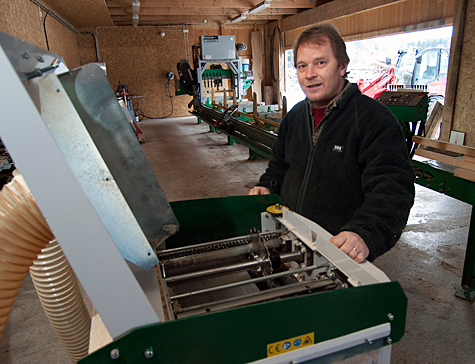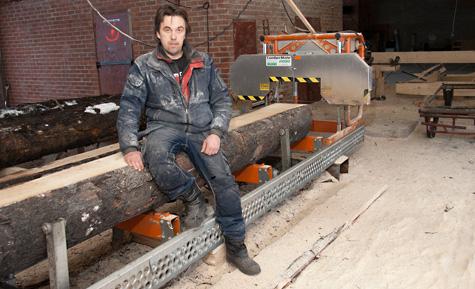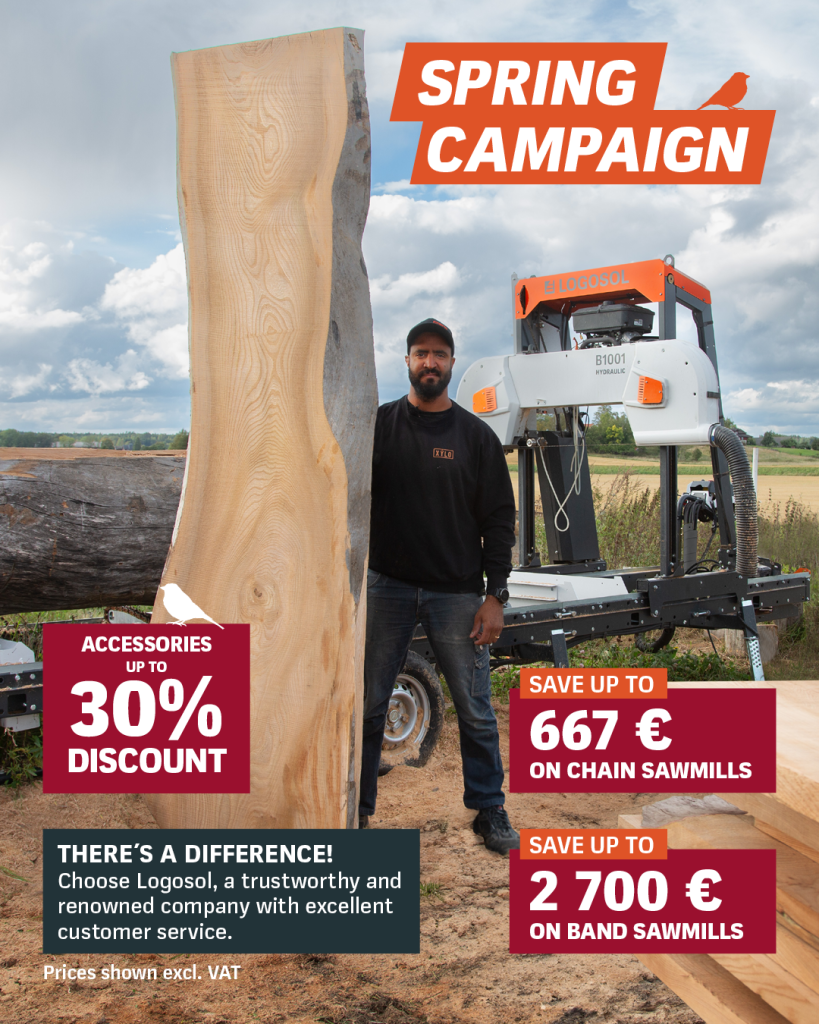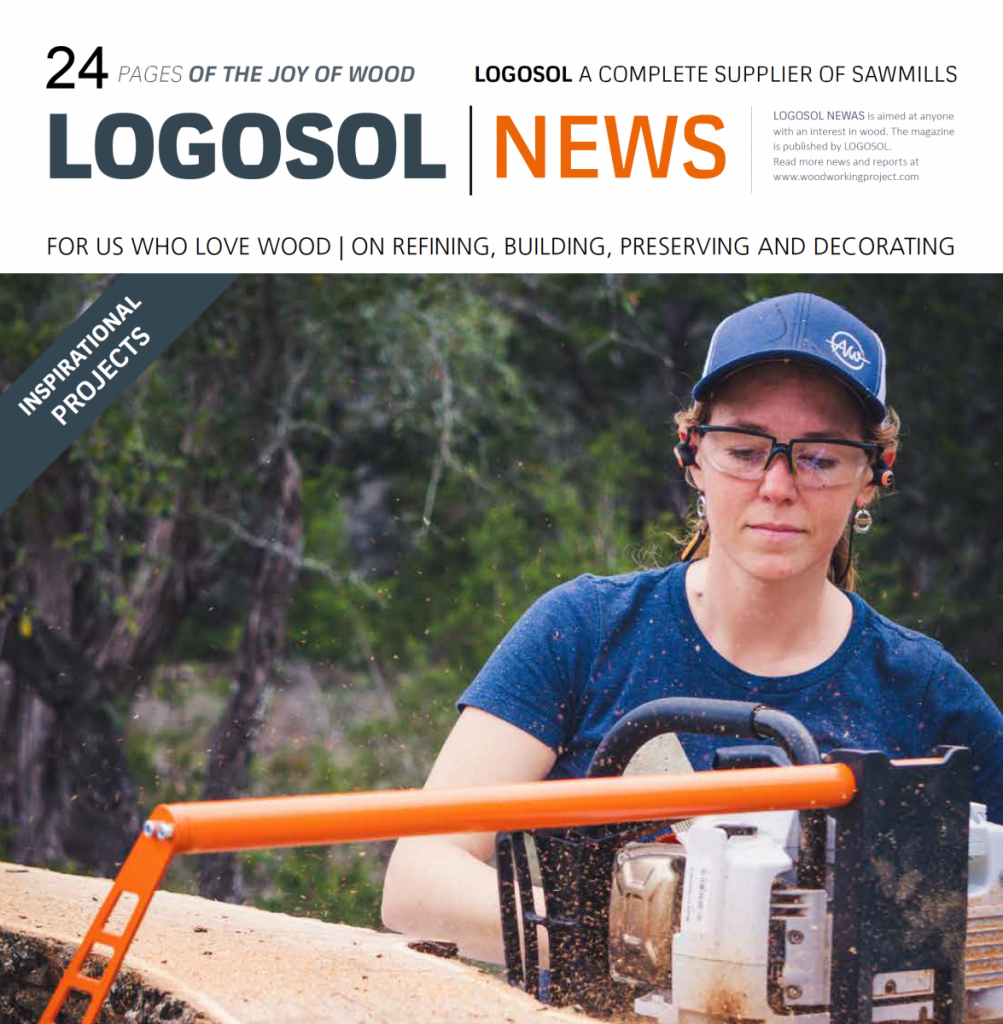Many people dream of making a living using machinery from Logosol.
Peter Andersson in Vreta Kloster, Östergötland, Sweden, has done just that.
“The important thing is not the machinery but the business concept and sales,” he says.
With a history as a travelling salesman, Peter had an advantage when starting out. Or, more accurately, sneaking into the business.
It began in 1983 when the family from Linköping purchased the farm with accompanying forest. Peter continued with his sales job, while building up the farm with meat production. He replaced his wandering life as a salesman with his own firm, Stängsel & Skogsteknik.
“We sell and erect fences, enclosures and gates,” he explains.
BETTER MARGINS
Although there was a portable sawmill at the farm, he chose to buy in the fencing and gates. The sawmill was used simply to produce timber for his own needs. Over time it became increasingly clear that the margins would be better from manufacturing than onward selling.
As a seasoned salesman, Peter knows that it’s a matter of finding your own niche. He decided on gates and fences made of oak. It’s exclusive and, above all, more durable than the impregnated inferior pine, often used in factory-produced gates and fencing. In addition, oak logs can be kept around much longer than softwood before being sawn.
For thick oak, strong equipment is required, so the portable sawmill was replaced with a Logosol Norwood LM40 bandsaw.
“The sawmill worked well, but you can see how thick the logs I have are,” says Peter.
BIG MILL FOR OVERSIZED LOGS
A mountain of thick oak logs sits in the courtyard, together with another of even thicker elm. The majority of it has no chance of passing through an LM40. Instead he has invested in a larger band sawmill. The new one cost almost ten times more than an LM40, but not even “the big saw” can manage the very largest logs in the stockpile. There is only one sawmill suitable for the task: the Logosol Big Mill with the biggest chainsaw from Stihl, which can also be found on site.
Self-production is beginning to gather speed and at the same time Peter has invested in a complete planing mill and a carpentry workshop. The latter consists of nothing but professional machines, with a Logosol MF30 vertical milling machine as a problem-solver for any unusual machining
There’s nothing but Logosol in the planing mill. The main machine is a PH260 four-sided planer/moulder, along with two Solo Planer/moulders, SH230 and SH410.
“The SH230 is a good machine, fast and simple to set, but unfortunately it’s not sufficient for the dimensions I plane,” says Peter.
Instead he has invested in the new SH410 Solo planer. It can handle larger dimensions than the four-sided planer/moulder and is a welcome addition for large gateposts and similar. Peter also regularly receives inquiries about planing smaller batches.
“It’s much quicker to reset a Solo planer and the results are just as good as with the four-sided planer/moulder. If it’s only a few metres, it doesn’t matter if you have to run through the timber twice,” he explains.
USEFUL ADVICE ABOUT OAK
During the summer months he has plenty to do erecting fences. Sawing and planing are a winter job. Everything is now in place for Stängsel & Skogsteknik to become by and large self-sufficient in terms of components for fences, enclosures and gates. But first there’s the mountain of oak logs to be sawn and left to dry properly. There’s space under cover, as the meat production is now confined to two cows and one bull.
“Freshly-sawn oak rots quickly if it comes into contact with the ground. The timber must be properly dry,” says Peter, who, as per ancient tradition, chars the bottom section of the posts.
“If you do it right, a fence of oak will last much longer than pressure-treated wood.”
For more about Peter Andersson’s gates and fences, visit the website www.ekgrindar.se.








